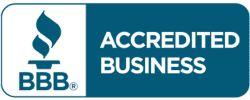Navigating the Digital Landscape: 5 Core Components of SEO
In the digital age, having a strong online presence is crucial for businesses. Search Engine Optimization (SEO) is the key to achieving this. For small and medium-sized businesses (SMBs), mastering the core components of SEO can significantly boost visibility and drive growth. This guide will explore the five core components of SEO, using simple language and engaging analogies to make complex ideas easy to understand.
Introduction
Imagine your website as a bustling shop in a busy city. SEO is like the neon sign outside your shop that attracts visitors. With the right SEO strategies, you can ensure your shop stands out in the crowded marketplace. Let’s dive into the five core components of SEO that can help you navigate the digital landscape.
1. Keyword Research
Keywords are the foundation of SEO. They are the words and phrases that people type into search engines when looking for information.
Understanding Keywords:
- Short-Tail Keywords: These are broad and general terms, like “shoes.”
- Long-Tail Keywords: These are more specific phrases, like “best running shoes for flat feet.”
Finding the Right Keywords
Finding the right keywords is like choosing the best ingredients for a recipe. You want to use terms that your target audience is searching for.
Tools for Keyword Research:
- Google Keyword Planner: Provides keyword ideas and search volume data.
- Ahrefs: Offers comprehensive keyword analysis and competitive insights.
- SEMrush: An all-in-one tool for keyword research and SEO.
When researching keywords, look for terms that have high search volume and low competition. These are the golden seeds that will help your content grow.
Using Keywords Effectively
Once you’ve identified your keywords, you need to use them effectively in your content.
Best Practices:
- Title Tags: Include your main keyword in the title tag.
- Headings: Use keywords in headings and subheadings.
- Content: Naturally incorporate keywords into your content.
Using keywords effectively is like seasoning a dish – you need just the right amount to make it tasty.
2. Quality Content
High-quality content is essential for SEO success. It’s not just about using the right keywords but also providing valuable information that meets the needs of your audience.
Crafting Engaging Content
Your content should be engaging, informative, and relevant to your audience.
Tips for Creating Quality Content:
- Be Thorough: Cover the topic in depth.
- Use Subheadings: Break up the content with clear, informative subheadings.
- Include Examples: Use examples to illustrate your points.
Creating valuable content is like offering a refreshing drink to a thirsty visitor. It keeps them satisfied and wanting more.
Types of Content
Different types of content can attract and engage your audience.
Popular Content Types:
- Blog Posts: Informative articles that cover specific topics.
- Infographics: Visual representations of information.
- Videos: Engaging visual content that explains complex topics.
Offering a variety of content types is like having a diverse menu – there’s something for everyone.
3. On-Page SEO
On-page SEO refers to the elements on your webpage that you can optimize for better search engine rankings.
Optimizing On-Page Elements
Optimizing on-page elements ensures that search engines can easily understand and index your content.
Key On-Page Elements:
- Title Tag: Include your main keyword in the title tag.
- Meta Description: Write a compelling meta description that includes your keyword.
- Headers (H1, H2, H3): Use headers to structure your content and include keywords.
On-page SEO is like organizing your shop so that everything is easy to find and appealing to look at.
Internal Linking
Internal linking helps search engines understand the structure of your website and keeps visitors on your site longer.
Benefits of Internal Linking:
- Improved Navigation: Helps visitors find related content.
- Link Equity: Distributes the ranking power throughout your site.
- Indexing: Helps search engines crawl and index your site.
Using internal links effectively is like providing a map of your shop, making it easy for visitors to explore.
4. Technical SEO
Technical SEO involves optimizing the backend of your website to improve its performance and ensure search engines can crawl and index your site effectively.
Key Technical SEO Elements
Optimizing technical SEO elements can significantly impact your search engine rankings.
Important Elements:
- Site Speed: Ensure your site loads quickly.
- Mobile-Friendliness: Optimize your site for mobile devices.
- Secure Connection (HTTPS): Use HTTPS to secure your site.
Technical SEO is like ensuring your shop has a solid foundation and smooth operations.
Tools for Technical SEO
There are several tools available to help you optimize the technical aspects of your website.
Popular Tools:
- Google PageSpeed Insights: Analyzes your site’s speed and provides suggestions for improvement.
- Google Search Console: Helps monitor and troubleshoot your site’s presence in Google Search results.
- Screaming Frog: A website crawler that helps identify technical issues.
Using these tools is like having a toolkit to ensure your shop runs smoothly and efficiently.
5. Off-Page SEO
Off-page SEO involves activities outside your website that can impact your search engine rankings.
Building Backlinks
Backlinks are links from other websites to your site. They are like votes of confidence that tell search engines your site is credible and valuable.
Strategies for Building Backlinks:
- Guest Blogging: Write articles for other blogs and include links to your site.
- Influencer Outreach: Partner with influencers to promote your content.
- Content Marketing: Create high-quality content that others want to link to.
Building backlinks is like getting endorsements from other reputable shops in the marketplace.
Social Media Engagement
Social media can also play a role in off-page SEO by driving traffic to your site and increasing your online presence.
Tips for Social Media Engagement:
- Share Your Content: Post your content on social media platforms.
- Engage with Followers: Respond to comments and engage with your audience.
- Use Hashtags: Use relevant hashtags to increase visibility.
Engaging on social media is like handing out flyers and talking to people in the marketplace to draw them to your shop.
Measuring SEO Success
Tracking the success of your SEO efforts is essential to understand what’s working and where you can improve.
Using Analytics Tools
Analytics tools provide valuable insights into your website’s performance.
Popular Analytics Tools:
- Google Analytics: Tracks website traffic, user behavior, and conversions.
- Ahrefs: Monitors backlinks, keyword rankings, and site health.
- SEMrush: Provides comprehensive SEO analysis and competitive insights.
Using analytics tools is like having a detailed report card that shows how well your shop is performing.
Key Performance Indicators (KPIs)
Identify KPIs that are relevant to your SEO goals and track them regularly.
Important KPIs:
- Organic Traffic: The number of visitors coming from search engines.
- Bounce Rate: The percentage of visitors who leave your site after viewing only one page.
- Conversion Rate: The percentage of visitors who complete a desired action (e.g., making a purchase).
Tracking KPIs is like keeping an eye on your shop’s daily sales and customer satisfaction levels.
The Future of SEO
SEO is constantly evolving. Staying ahead of the latest trends and updates is crucial for long-term success.
Voice Search Optimization
With the rise of voice-activated devices, optimizing your content for voice search is becoming increasingly important.
Voice Search Tips:
- Use Natural Language: Write in a conversational tone.
- Answer Questions: Include questions and answers in your content.
- Focus on Long-Tail Keywords: Voice searches are often longer and more specific.
Voice search optimization is like training your staff to answer questions quickly and accurately.
Artificial Intelligence (AI) and Machine Learning
AI and machine learning are changing the way search engines rank content. Understanding these technologies can give you an edge.
AI Strategies:
- Content Optimization: Use AI tools to analyze and optimize your content.
- Predictive Analytics: Use data to predict trends and tailor your content accordingly.
- Personalization: Use AI to create personalized content for your audience.
Incorporating AI is like hiring a high-tech advisor who helps you stay ahead of the competition.
User Experience (UX)
Search engines increasingly consider user experience when ranking content. Providing a great UX can boost your SEO.
UX Tips:
- Fast Loading Speed: Ensure your site loads quickly.
- Easy Navigation: Make it easy for visitors to find what they’re looking for.
- Engaging Design: Use a clean, attractive design that keeps visitors engaged.
Improving UX is like renovating your shop to make it more welcoming and enjoyable for visitors.
Conclusion
Mastering the core components of SEO is essential for navigating the digital landscape. By understanding and implementing effective strategies, you can increase your visibility, attract more traffic, and grow your business. Remember to stay updated with the latest trends, track your performance, and continuously optimize your content. With the right approach, you can achieve SEO success and take your business to new heights.






